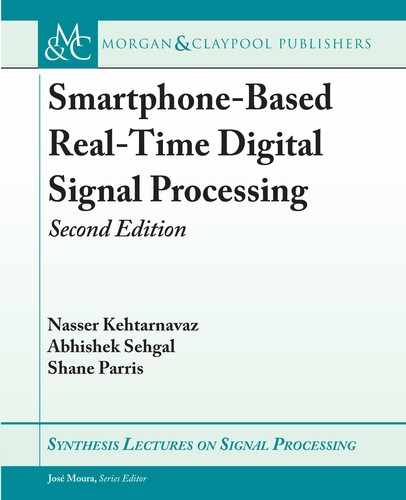
9.5. ARCHITECTURE-SPECIFIC OPTIMIZATIONS 139
for(i=0; i<fir->frameSize; i+=4) {
freg1 = vld1q_f32(input); //load first four elements of input
input += 4;
vst1q_f32(windowPnt1, freg1); //store in window buffer
windowPnt1 += 4;
}
for(i=0; i<fir->frameSize; i++) {
windowPnt2 = fir->window + 1 + i; //copy pointers
coeffsPnt = fir->coefficients;
freg3 = vdupq_n_f32(0.0); // initialize accumulator to zero
for(j=0; j<fir->numCoefficients; j+=4) {
//load four elements of input
freg1 = vld1q_f32(windowPnt2);
windowPnt2 += 4;
//load four filter coefficients
freg2 = vld1q_f32(coeffsPnt);
coeffsPnt += 4;
//multiply-accumulate - freg3 = freg1*freg2+freg3
freg3 = vmlaq_f32(freg3, freg1, freg2);
}
//save output
fir->result[i] = (freg3[0] + freg3[1] + freg3[2] + freg3[3]);
}
}
e overall result is the same as the previous code versions, but now the linear convolution result
is computed with vectors containing four elements each.
..................Content has been hidden....................
You can't read the all page of ebook, please click here login for view all page.
